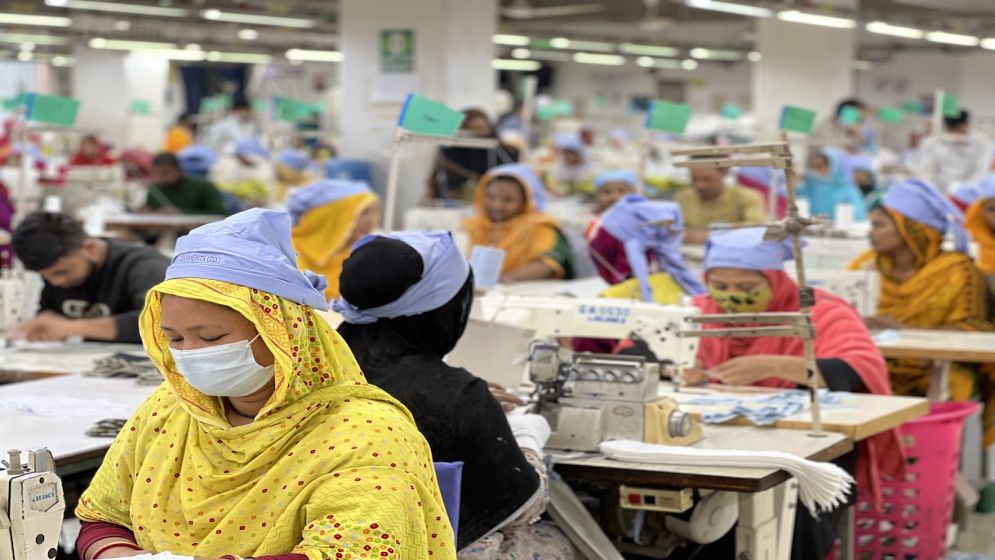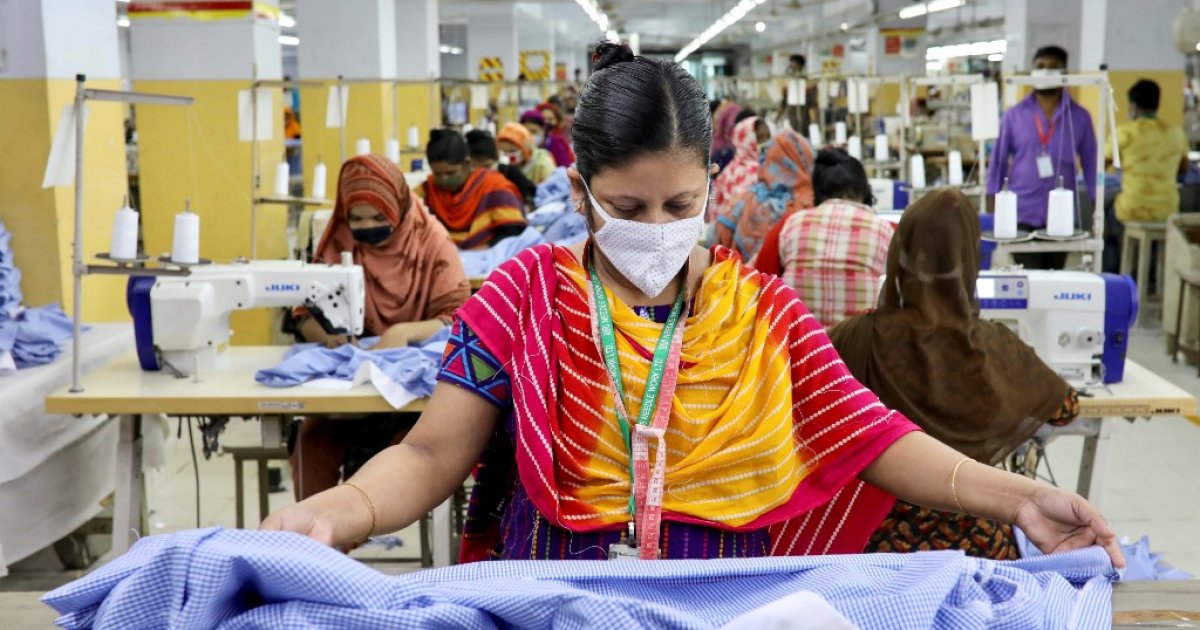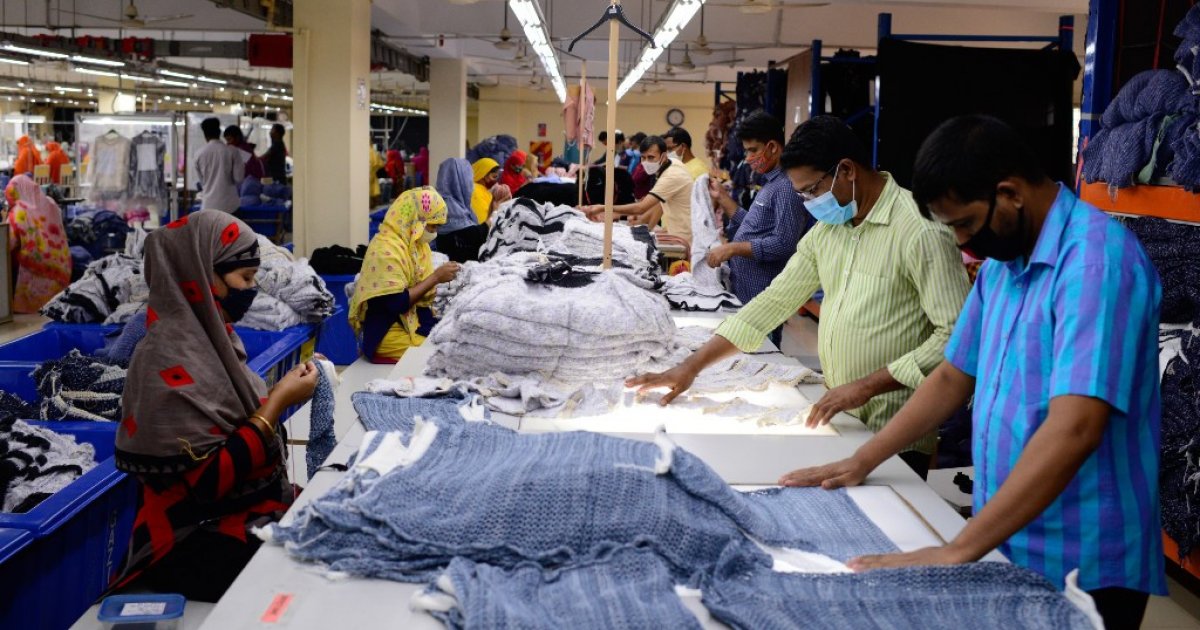RMG manufacturers decry further export incentive cuts, anticipate significant cost increases

The ready-made garment (RMG) sector, Bangladesh's top export earner and recipient of significant government support faces the most substantial losses as export incentives are reduced for a second time in five months.
The government justifies these cuts as preparation for Bangladesh's graduation from Least Developed Country (LDC) status in 2026.
Effective immediately, a central bank circular has reduced the special incentive for the RMG sector from 0.5% to 0.3%. This decision has been met with criticism from the apparel industry, who argue that it will negatively impact exports, particularly during the current economic challenges.
While most export incentives have been reduced, the incentive for crust leather has increased from 0% to 6%. This change is expected to lower the government's overall expenditure on incentives in the coming fiscal year.
In addition to the RMG sector, various other sectors such as jute, leather, frozen fish, and agro products will also experience a reduction in incentives, especially those aimed at expanding into new markets.
A senior central bank official stated that the government allocated approximately Tk 8,000 crore for export incentives in the 2022-23 fiscal year. However, due to the recent decrease in incentive rates, this expenditure is projected to decline in the 2024 fiscal year.
Furthermore, incentives for exploring new markets have been lowered by 1 percentage point to 2%. This reduction impacts a wide range of sectors, such as jute and jute products, leather and leather products, frozen fish, and agro products.
Prior to the new circular, the highest incentive rate of 15% applied to agro products, potatoes, and processed meats, a significant decrease from the 20% incentive offered before February. These rates have now been further reduced to 10%.
The Bangladesh Bank circular outlines that the government has been providing cash incentives for 43 export items.
Notably, finance ministry data reveals that a considerable 65% of these incentives are directed towards the garments and textiles industry.

What do the RMG industry leaders say?
Pointing out that the country could still provide incentives up until 2026 (as WTO rules allow it for LDC countries), exporters, especially of the readymade garment products, said they have consistently communicated their concerns about reducing incentives [at this time] due to the current challenges of declining international orders and currency fluctuations.
“The government could have continued it for at least one more year,” said Siddiqur Rahman, former president of Bangladesh Garment Manufacturers and Exporters Association (BGMEA), the main apparel trade body, “Incentive cuts during this tough time are very harmful for us.”
In the last fiscal year, which runs from July to June in the South Asian nation, apparel products accounted for nearly 65% of the export cash incentives, which amounted to Tk7,825 crore or roughly $750 million, said the data of Export Promotion Bureau (EPB) of the government.
Rahman mentioned that from January, they have already implemented a 56% wage hike for their workers. It happened on the top of what he called a “slow year” for apparel export.
“Now the freight costs have increased by many times because of the Red Sea conflict. How could we remain competitive in the global market if there is an incentive cut now,” he lamented.
Mohammad Hatem from the Bangladesh Knitwear Manufacturers and Exporters Association (BKMEA) argues that the recent reduction in incentives is ill-timed and will negatively impact domestic spinning mills.
He suggests that incentives should be directly linked to repatriated export earnings to alleviate some of the challenges faced by exporters.
Exporters express concerns that the timing of the incentive cuts is detrimental, as they coincide with rising costs in gas,electricity, wages, and bank loans. They believe that a reduction in exports is inevitable and suggest that the cuts could have been postponed until 2025 or 2026.

What will happen to export
competitiveness?
Faruque Hassan, another former president of the Bangladesh Garment Manufacturers and Exporters Association (BGMEA), warns that Bangladesh's export competitiveness will suffer due to these cuts.
He highlights the potential losses that exporters may face due to previously accepted orders based on higher incentive rates.
Professor Mustafizur Rahman, a distinguished fellow at the Centre for Policy Dialogue, supported the gradual reduction of incentives as Bangladesh prepares to graduate from LDC status, emphasizing the need for businesses to adapt to this reality.
He highlighted the significant benefits exporters have gained from the taka's devaluation against the dollar, which has increased their earnings per dollar from Tk86 to Tk118.
Professor Rahman acknowledged the challenges faced by businesses due to rising costs, such as interest rates on loans increasing from 9% to 14%, and stressed the importance of providing alternative support measures as government subsidies are reduced.
He suggested focusing on reducing transportation costs for export goods, improving access to government services for exporters, and enhancing the efficiency and competitiveness of relevant institutions.
Selim Raihan, executive director of the South Asian Network on Economic Modeling (Sanem), expressed concerns over the withdrawal of export incentives at a time “when traders are already facing a crisis due to rising fuel and electricity prices.”
He warned that this move would “further exacerbate their difficulties.”
—-

